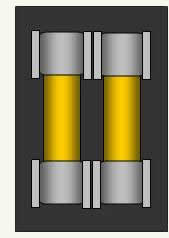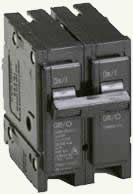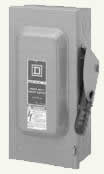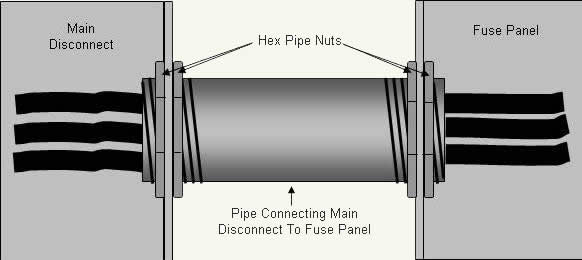
Figure 1 - Removable cartridge fuse holder/block
Remember that circuits in the fuse panel that fed 240 VAC to hot water tanks, ranges and clothes dryers were most likely made up of 2 cartridge fuses, as shown in Figure 1, on a removable fuse block. These will need to be replaced with double pole circuit breakers for the proper amperage.
Types of Circuit Breakers

Single pole breaker is used for circuits that require 115VAC

Double pole breaker is used for circuits requiring 230 VAC or for spit receptacles (common in kitchens) where each of the sockets on a duplex receptacle are separately fused.
The cartridge fuse blocks serve 3 purposes:
- They can be used to fuse each side of a 230 VAC circuit. Common for water heaters, ranges and dryers.
- They can be used to fuse spit receptacles where the upper and lower part of the receptacle are on independent circuits. Common for kitchen receptacles.
- They can be used as the main disconnect for the fuse panel. In this situation the cartridge fuses will disconnect all power from the fuse panel circuits.
You can purchase your new breaker electrical panel also called a load center with and without a main breaker. This combines the older method of having a separate disconnect from the fuse panel. The main breaker turns off the power to all branch circuits. If you have a separate main disconnect switch, there is no need to have a main breaker.
You will be turning all of the power off in the home to do the conversion from the fuse panel to the circuit breaker panel. Because you will not have any utility lighting, make sure that you have flashlights or lanterns to provide you with working light.

Figure 2 - Main electrical service disconnect
- Turn off the power at the main disconnect as shown in Figure 2. This is either a lever on the side of the main disconnect electrical box, usually market with
ON
in one direction andOFF
in the opposite direction or a switch mounted on the front of the main disconnect electrical box, again markedON
andOFF
. - Open the main disconnect electrical box and remove the fuses. There is live power in this electrical box, even with the switch or lever turned to the
OFF
position. Removing the fuses, protects you from someone inadvertently turning the switch or lever back to theON
position and delivering power to the electrical circuits you are working on. - With the switch or lever in the
OFF
position and the fuses removed, the fuse distribution panel is dead. Remove the cover from the fuse distribution panel. You will most likely see a birds nest of wires running to terminals and grounding bars or screws.
The cables entering the fuse distribution box, should be coming in through box connectors. It is best to identify each of the cables and where it goes before you remove them. Use a piece of masking tape wrapped around the cable. Remove all the wires from terminals and pull the wires out through the box connectors (see Figure 2b).

Figure 3 - Electrical panel box connector
- It is most common that the wires running from the main disconnect electrical box to the fuse panel were run in a metal pipe, with threads on the ends, as shown in Figure 3. The pipe is most likely connected to the fuse panel using a large hexagon shaped nut, which screws over the thread on the inside of the fuse panel. There may also be a nut on the outside of the fuse panel, so that the fuse panel ends up being sandwiched between the nuts and the pipe goes through a knockout in the fuse panel. Remove the inside nut in the fuse panel from the pipe.
The box connectors that you removed from the fuse panel can be reused on the new breaker panel.

